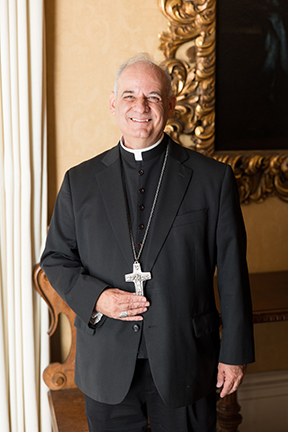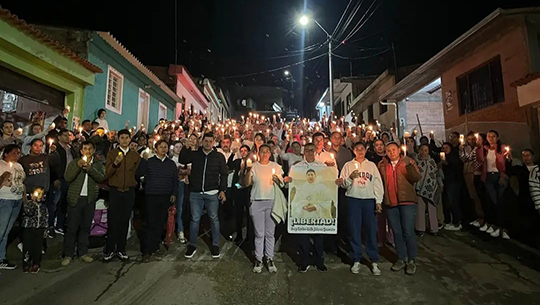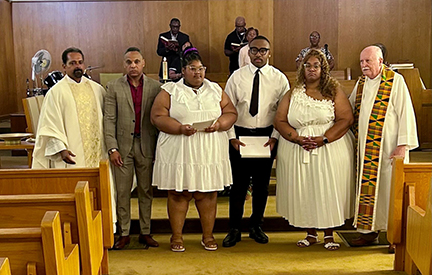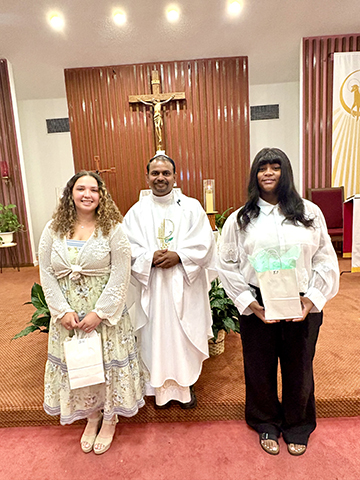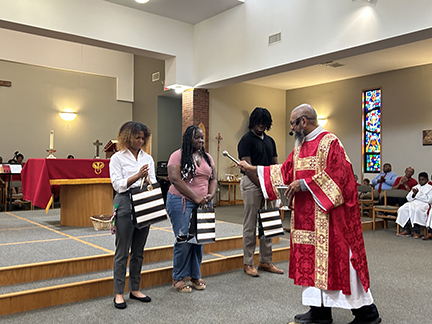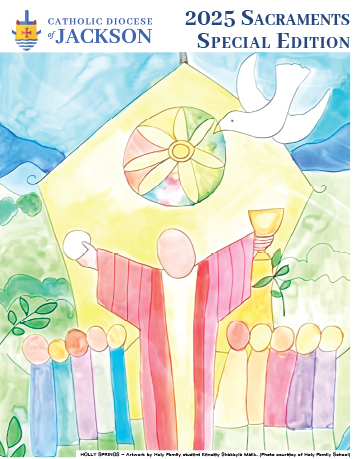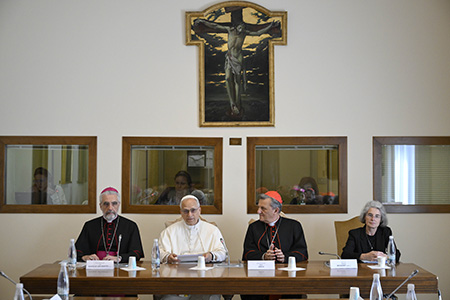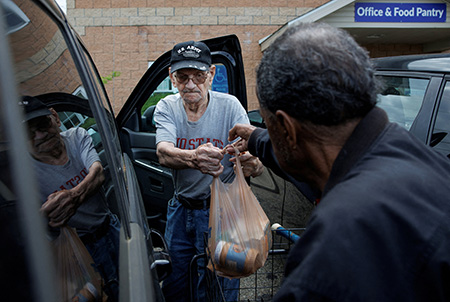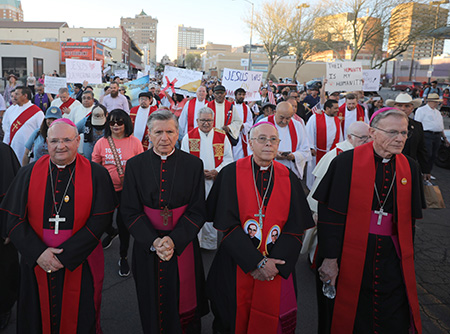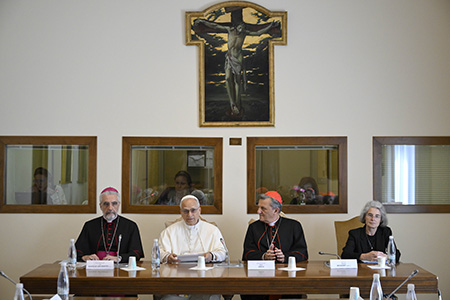Por Kate Scanlon
WASHINGTON (OSV News) – El presidente Donald Trump firmó el 4 de julio un proyecto de ley de reconciliación fiscal que implementa gran parte de su agenda legislativa sobre impuestos e inmigración durante una ceremonia del Día de la Independencia en la Casa Blanca.
“Nuestro país ha tenido mucho que celebrar este Día de la Independencia al entrar en nuestro 249.º aniversario. Estados Unidos está ganando, ganando, ganando como nunca antes”, declaró Trump en la ceremonia.
“Hemos declarado oficialmente permanentes los recortes de impuestos de Trump”, añadió. “Es el mayor recorte de impuestos en la historia de nuestro país. … Después de que esto entre en vigor, nuestro país será un cohete, económicamente”.
Previamente, la Cámara de Representantes de EE. UU. aprobó el 3 de julio la “One Big Beautiful Bill Act” (la Gran y Hermosa Ley) con una votación de 218 a 214.
El Senado aprobó previamente el paquete de reconciliación el 1 de julio, después de que Trump los instara a hacerlo antes del 4 de julio.
Los líderes católicos han elogiado y criticado alternativamente diversas disposiciones de la legislación. Sin embargo, en una alerta de acción enviada por correo electrónico a sus partidarios el 1 de julio, la Conferencia de Obispos Católicos de EE.UU. finalmente declaró que el proyecto de ley “actualmente perjudica a las familias más pobres”.
Solo dos republicanos – los representantes Thomas Massie, de Kentucky, y Brian Fitzpatrick, de Pensilvania – votaron en contra de la medida. Massie mencionó el aumento proyectado de la deuda nacional, mientras que Fitzpatrick, quien es católico, mencionó cómo los recortes a Medicaid afectarían a su distrito.
El arzobispo Timothy P. Broglio, presidente de la USCCB y jefe de la Arquidiócesis de EE.UU. para los Servicios Militares, declaró el 3 de julio tras la votación que él y los obispos habían instado “repetida y consistentemente” a los legisladores a garantizar que el proyecto de ley ayudara a las familias necesitadas y a “cambiar de rumbo” en aspectos “que perjudican a los pobres y vulnerables”.
“La versión final del proyecto de ley incluye recortes abusivos a la atención médica y la asistencia alimentaria, recortes de impuestos que aumentan la desigualdad, disposiciones migratorias que perjudican a familias y niños, y recortes a programas que protegen la creación de Dios”, declaró el arzobispo Broglio. “El proyecto de ley, tal como se aprobó, causará el mayor daño a las personas especialmente vulnerables de nuestra sociedad. Con la entrada en vigor de sus disposiciones, las personas perderán el acceso a la atención médica y tendrán dificultades para comprar alimentos, las familias se separarán y las comunidades vulnerables estarán menos preparadas para afrontar los impactos ambientales de la contaminación y las condiciones climáticas extremas”.
El presidente de la USCCB afirmó: “Se debe hacer más para prevenir estos efectos devastadores”. Señaló que la propia enseñanza de la Iglesia sobre la dignidad humana y el bien común la obliga a “redoblar esfuerzos y ofrecer ayuda concreta a quienes más la necesiten, así como a seguir abogando por iniciativas legislativas que brinden mejores oportunidades en el futuro para quienes la necesiten”.
El presidente de la Cámara de Representantes, Mike Johnson, republicano por Louisiana, declaró en una conferencia de prensa posterior a la votación que los republicanos “no querían desperdiciar la oportunidad” de controlar ambas cámaras del Congreso y la Casa Blanca para promulgar la agenda de Trump.
“Muchas de las estimaciones sobre el impacto negativo que esta legislación tendría en las comunidades de mi estado o de cualquier otro son exageradas”, declaró Johnson al ser preguntado sobre las críticas al proyecto de ley por parte de grupos religiosos de su estado. “Les puedo asegurar que este proyecto de ley será muy beneficioso para todos en el país, especialmente para mis electores. Lo que es bueno para Louisiana es bueno para Estados Unidos”.
Durante su discurso de ocho horas y 44 minutos en el pleno – parte de un procedimiento de la Cámara conocido como el “minuto mágico”, en el que los miembros del liderazgo pueden hablar todo el tiempo que deseen durante los discursos de “un minuto” sin restar tiempo extra al debate –, Jeffries dijo: “Me levanto hoy en firme oposición a la repugnante abominación de Donald Trump”.
Jeffries afirmó que la legislación “destruye Medicaid, priva de comida a niños, ancianos y veteranos, y recompensa a los multimillonarios con enormes exenciones fiscales”.
La Oficina de Presupuesto del Congreso, una entidad no partidista, estimó que casi 12 millones de personas perderán su cobertura médica bajo la legislación.
Ingrid Delgado, directora nacional de políticas públicas y defensa de la Sociedad de San Vicente de Paúl EE.UU., declaró a OSV News: “Estos grandes recortes a la red de seguridad social son realmente preocupantes, por el impacto que tendrán en los más marginados”.
“La Iglesia Católica considera el acceso a la alimentación y a la atención médica como derechos humanos fundamentales”, afirmó Delgado. “Por lo tanto, quienes acceden al SNAP en nuestro país y a Medicaid son nuestros hermanos y hermanas más marginados y pobres”.
Delgado añadió que los recortes a estos programas podrían llevar a “más personas (a estar) sin seguro, sin comida y en riesgo de quedarse sin hogar”.
La legislación aumentará significativamente los fondos para el Servicio de Inmigración y Control de Aduanas (ICE por sus siglas en inglés) y la Patrulla Fronteriza, mientras la administración Trump busca implementar sus políticas migratorias de línea dura, incluyendo la deportación masiva de inmigrantes sin autorización legal para vivir y trabajar en Estados Unidos. Autorizó cerca de 150 mil millones de dólares en nuevos gastos para inmigración y control fronterizo. Antes de la aprobación del proyecto de ley, el vicepresidente J.D. Vance promocionó el control migratorio como la razón principal por la que creía que los republicanos del Congreso debían aprobarlo.
Sin embargo, otros celebraron una disposición de la legislación que retiraría fondos a Planned Parenthood solo por un año – en comparación con la propuesta original de 10 años – y la financiación se reanudaría posteriormente.
Marjorie Dannenfelser, presidenta de Susan B. Anthony Pro-Life America, declaró a OSV News el día antes de la votación de la Cámara de Representantes que “este es el posible punto culminante del primer año en el que los contribuyentes federales no se ven obligados a financiar grandes abortos, y eso sería enorme”.
En una campaña de recaudación de fondos en su sitio web, Planned Parenthood afirmó que el impacto de la legislación “será inmediato y devastador”.
La Oficina de Presupuesto del Congreso, entidad no partidista, estimó que la legislación aumentaría el déficit en casi 3,3 billones de dólares entre 2025 y 2034. La deuda nacional de Estados Unidos asciende actualmente a 36,2 billones de dólares y tiene consecuencias para el resto de la sociedad.
Una carta del 26 de junio dirigida a los senadores de la Conferencia de Obispos Católicos de Estados Unidos elogió la disposición que despojaría de fondos a Planned Parenthood, a la vez que se opuso a otras que, según ellos, aumentarían los impuestos a los trabajadores pobres y, al mismo tiempo, otorgarían grandes recortes fiscales a los más ricos. La carta añadía: “Por ello, millones de familias pobres no podrán permitirse una atención sanitaria que les salve la vida y tendrán dificultades para comprar alimentos para sus hijos. Algunos hospitales rurales probablemente cerrarán”. Los obispos calificaron estas disposiciones de “inconcebibles e inaceptables”.
Ese mismo día, 20 obispos católicos estadounidenses firmaron una iniciativa interreligiosa que instaba al Senado a rechazar el proyecto de ley, citando, entre otras preocupaciones, los recortes a la asistencia nutricional y a Medicaid, y su impacto en los inmigrantes, calificándolo de “draconiano” y un “fracaso moral”.
(Kate Scanlon es reportera nacional de OSV News y cubre Washington. Síguela en @kgscanlon.)
Más información en
Mississippi Catholic.com
Lee cómo 20 obispos de EE.UU. se unieron a un esfuerzo interreligioso que calificó la legislación como un “fracaso moral” en: http://bit.ly/46FXEPN
Para un análisis sobre cómo la ‘Gran y Hermosa Ley’ podría tener un impacto “sin precedentes” en los inmigrantes, visita: http://bit.ly/3Is31bf

